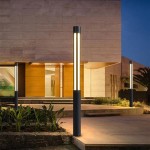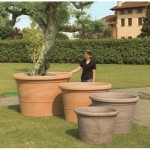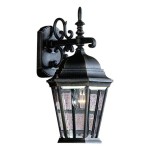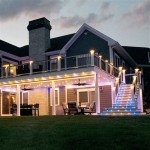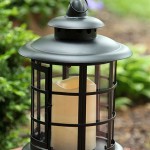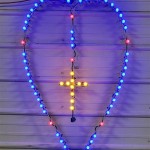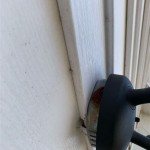Sodium Vapor Outdoor Lighting: A Comprehensive Guide
Sodium vapor outdoor lighting has been a mainstay in street lighting, parking lots, and sports fields for decades. Its distinct yellow-orange glow is instantly recognizable, and its efficiency and longevity have made it a popular choice for numerous applications. However, recent developments in lighting technology have presented alternatives with enhanced performance and environmental considerations. This comprehensive guide will delve into the features, advantages, disadvantages, and applications of sodium vapor outdoor lighting, providing a thorough understanding of this prevalent lighting solution.
Understanding Sodium Vapor Lighting
Sodium vapor lamps operate on the principle of passing an electric current through a sealed glass tube containing sodium vapor. This process excites the sodium atoms, causing them to emit light. The emitted light is predominantly yellow-orange, with a specific wavelength that is particularly efficient for human vision. Sodium vapor lighting is classified into two main types: high-pressure sodium (HPS) and low-pressure sodium (LPS).
HPS lamps produce a brighter, more intense light with better color rendering than LPS lamps. They are commonly used in applications requiring greater illumination, such as street lighting, parking lots, and sports fields. LPS lamps, on the other hand, emit a more monochromatic, yellowish light with better energy efficiency. They are often preferred for applications where color rendering is not critical, such as street lighting on rural roads or security lighting.
Advantages of Sodium Vapor Lighting
Sodium vapor lighting offers several advantages, contributing to its widespread adoption in outdoor lighting applications:
High Efficiency
Sodium vapor lamps exhibit high luminous efficacy, meaning they generate a significant amount of light output for the amount of energy consumed. This efficiency translates to lower energy costs and reduced environmental impact compared to other lighting technologies.
Long Lifespan
Sodium vapor lamps boast a considerably long lifespan, typically exceeding 12,000 hours. This extended lifespan reduces maintenance requirements and the need for frequent lamp replacements, contributing to cost savings over the long term.
Effective Illumination
Sodium vapor lighting provides effective illumination for a wide range of outdoor applications. Its distinct yellow-orange light effectively penetrates fog and haze, enhancing visibility and safety in challenging weather conditions. The focused beam of light produced by these lamps minimizes light pollution and ensures efficient illumination of targeted areas.
Disadvantages of Sodium Vapor Lighting
Despite its advantages, sodium vapor lighting also presents certain drawbacks that have spurred the adoption of alternative technologies:
Poor Color Rendering
The monochromatic nature of sodium vapor lighting results in poor color rendering, making it unsuitable for applications where accurate color perception is crucial. This limitation restricts its use in areas where color distinction is essential, such as retail spaces, art galleries, or residential landscapes.
Warm-up Time
Sodium vapor lamps take a considerable amount of time to reach full illumination, typically around 5-10 minutes. This warm-up time can be a drawback in situations where immediate illumination is required, such as emergency lighting or security applications.
Environmental Concerns
While sodium vapor lamps are energy-efficient, they contain mercury, a hazardous material. The disposal of these lamps requires specialized procedures to prevent environmental contamination. The use of mercury also raises environmental concerns, prompting the exploration of alternative mercury-free lighting technologies.
Applications of Sodium Vapor Lighting
Sodium vapor lighting finds applications in diverse outdoor lighting scenarios, including:
Street Lighting
Sodium vapor lamps, particularly HPS lamps, are frequently used in street lighting due to their high efficiency, long lifespan, and effective illumination in various weather conditions. Their yellow-orange light enhances visibility and safety for pedestrians and drivers on roads and highways.
Parking Lots and Garages
Parking lots and garages often utilize HPS lamps to provide adequate illumination for secure movement and vehicle parking. The bright light discourages criminal activity and ensures safe access to vehicles at night.
Sports Fields
HPS lamps are popular for illuminating sports fields, offering bright illumination for nighttime games and practice sessions. The focused beam of light efficiently illuminates the playing area while minimizing light pollution in surrounding areas.
Security Lighting
Sodium vapor lamps can be deployed for security lighting in areas requiring enhanced visibility and deterrence of crime. Their bright light deters intruders and enhances surveillance capabilities.

Sodium Vapor Lamp Wikipedia

Does Led Street Lamps Better Than High Pressure Sodium Mklights

How Safe Are High Pressure Sodium Lamps Compared To Led Oeo Lighting

Low Pressure Sodium Lighting Flagstaff Dark Skies Coalition

Like It Or Not Chicago S About To Get A Lot Less Orange

Like It Or Not Chicago S About To Get A Lot Less Orange

Palomar Skies Why Astronomers Love Low Pressure Sodium Lights

House Construction In Lamps Sodium Vapour Light Pollution Scenery Night Aesthetic

Sodium Vapor Street Light

Lighting Comparison Led Vs High Pressure Sodium Low
